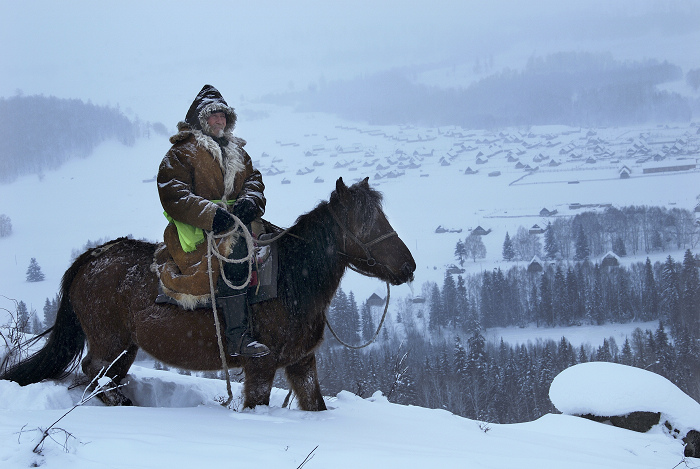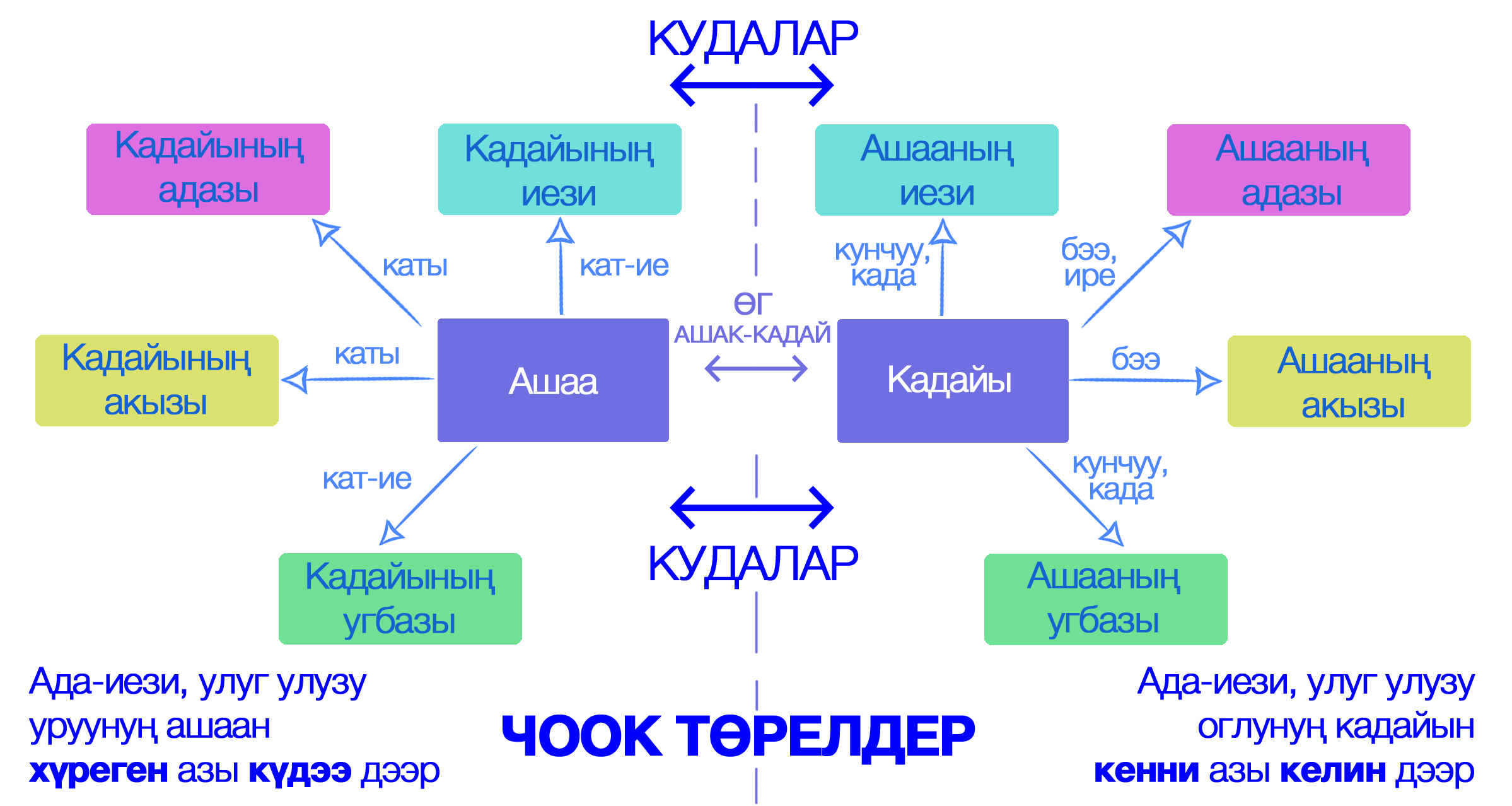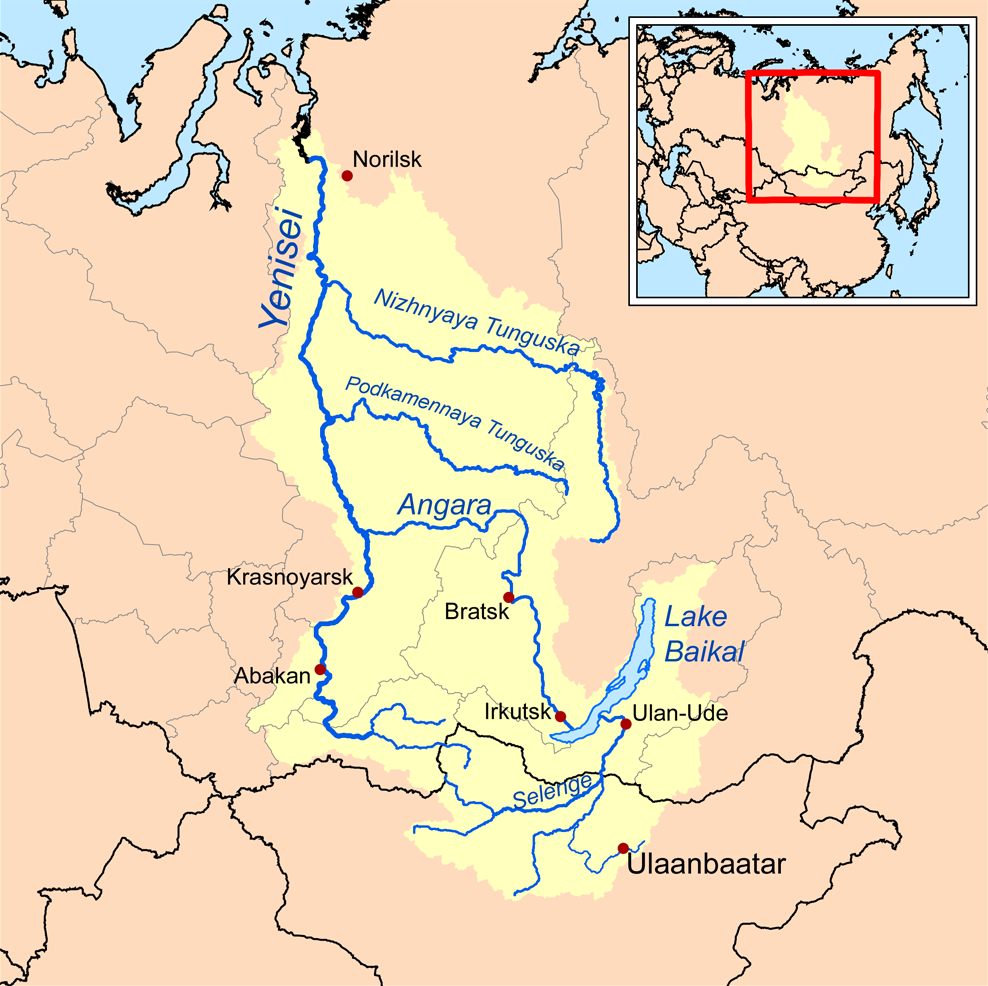|
Tuvans
The Tuvans (from Russian ) or Tyvans (from Tuvan ) are a Turkic ethnic group indigenous to Siberia that live in Tuva, Mongolia, and China. They speak the Tuvan language, a Siberian Turkic language. In Mongolia, they are regarded as one of the Uriankhai peoples. Tuvans have historically been livestock-herding nomads, tending to herds of goats, sheep, camels, reindeer, cattle, and yaks for the past thousands of years. (This is, in fact, evident in the Tuvan folk song " Tooruktug Dolgai Tangdym".) They have traditionally lived in yurts covered by felt or chums, layered with birch bark or hide that they relocate seasonally as they move to newer pastures. Traditionally, the Tuvans were divided into nine regions called ''khoshuun'', namely the Tozhu, Salchak, Oyunnar, Khemchik, Khaasuut, Shalyk, Nibazy, Daavan and Choodu, and Beezi. The first four were ruled by Uriankhai Mongol princes, while the rest were administered by Borjigin Mongol princes. History Besides pre ... [...More Info...] [...Related Items...] OR: [Wikipedia] [Google] [Baidu] [Amazon] |
Tuva
Tuva (; ) or Tyva (; ), officially the Republic of Tyva,; , is a Republics of Russia, republic of Russia. Tuva lies at the geographical center of Asia, in southern Siberia. The republic borders the Federal subjects of Russia, federal subjects of the Altai Republic, Buryatia, Irkutsk Oblast, Khakassia, and Krasnoyarsk Krai, and shares an international border with Mongolia to the south. Tuva has a population of 336,651 (Russian Census (2021), 2021 census). Its capital city is Kyzyl, in which more than a third of the population reside. Historically part of Outer Mongolia as Tannu Uriankhai during the Qing dynasty, the last imperial dynasty of China, Tuva broke away in 1911 as the Uryankhay Republic following the 1911 Revolution, Xinhai Revolution, which created the Republic of China (1912–1949), Republic of China. It became a Uryankhay Krai, Russian protectorate in 1914 and was replaced by the nominally independent Tuvan People's Republic in 1921 (known officially as Tannu ... [...More Info...] [...Related Items...] OR: [Wikipedia] [Google] [Baidu] [Amazon] |
Tuvan Language
Tuvan, also spelt Tyvan, is a Turkic language spoken in the Republic of Tuva in South Central Siberia, Russia. There are small groups of Tuvans that speak distinct dialects of Tuvan in China and Mongolia. History The earliest record of Tuvan is from the early 19th century by ''Wūlǐyǎsūtái zhìlüè'' (), Julius Klaproth 1823, Matthias Castrén 1857, Nikolay Katanov, Vasily Radlov, etc. The name Tuva goes back as early as the publication of ''The Secret History of the Mongols''. The Tuva (as they refer to themselves) have historically been referred to as Soyons, Soyots or Uriankhais. Classification Tuvan (also spelled Tyvan) is linguistically classified as a Sayan Turkic language. Its closest relative is the moribund Tofa. Tuvan, as spoken in Tuva, is principally divided into four dialect groups; Western, Central, Northeastern, Southeastern. * Central: forms the basis of the literary language and includes Ovyur and Bii-Khem subdialects. The geographical c ... [...More Info...] [...Related Items...] OR: [Wikipedia] [Google] [Baidu] [Amazon] |
Turkic Peoples
Turkic peoples are a collection of diverse ethnic groups of West Asia, West, Central Asia, Central, East Asia, East, and North Asia as well as parts of Europe, who speak Turkic languages.. "Turkic peoples, any of various peoples whose members speak languages belonging to the Turkic subfamily...". "The Turkic peoples represent a diverse collection of ethnic groups defined by the Turkic languages." According to historians and linguists, the Proto-Turkic language originated in Central-East Asia, potentially in the Altai-Sayan region, Mongolia or Tuva.: "The ultimate Proto-Turkic homeland may have been located in a more compact area, most likely in Eastern Mongolia": "The best candidate for the Turkic Urheimat would then be northern and western Mongolia and Tuva, where all these haplogroups could have intermingled, rather than eastern and southern Mongolia..." Initially, Proto-Turkic speakers were potentially both hunter-gatherers and farmers; they later became nomadic Pastoralism, ... [...More Info...] [...Related Items...] OR: [Wikipedia] [Google] [Baidu] [Amazon] |
Uriankhai
Uriankhai is a term of address applied by the Mongols to a group of forest peoples of the North, who include the Turkic-speaking Tuvans and Yakuts, while sometimes it is also applied to the Mongolian-speaking Altai Uriankhai. The Uriankhai included the western forest Uriankhai tribe and the Transbaikal Uriankhai tribe, with the former recorded in Chinese sources as ). History The name "Uriankhai' means "uria" (motto, war motto) and khan (lord) in Mongolian. The Mongols applied the name to all the forest peoples and, later, to Tuvans. They were classified by the Mongols as Darligin Mongols. At the beginning of the Mongol Empire (1206–1368), the Uriankhai were located in central Mongolia. In 13th century Yuan Mongol, Rashid-al-Din Hamadani described the Forest Uriyankhai as extremely isolated Siberian forest people living in birch bark tents and hunting on skis. Despite the similarity in name to the famous Uriyankhan clan of the Mongols, Rashid states that t ... [...More Info...] [...Related Items...] OR: [Wikipedia] [Google] [Baidu] [Amazon] |
Tofalar
The Tofalar (also Karagas or Tofa; Тофалары, тофа (tofa) in Russian) people are a Turkic people who live in Tofalariya, in the southwestern part of Nizhneudinsky District, Irkutsk Oblast of Russia. The Tofalar population is highly mixed with Russians due to the presence of Russian settlers and high rates of intermarriage. Prior to Soviet rule, the Tofalar led a nomadic lifestyle in the taiga, engaging in reindeer husbandry and hunting. Afterwards, they were resettled by the Soviet government and forced to adopt sedentarism and were discouraged from practicing hunting and shamanism. According to the 2010 census, there were 762 Tofalar in Russia. Etymology Tofalar is an endonym and contains the Turkic plural suffix -lar, thus translating to "Tofas"; Tofalar means "people of the deer." The Tofalar were formerly known as 'Karagas,' which was derived from the name of one particular Tofalar clan, the Kara-Kash or Karahaash. History Origins The ancestors of th ... [...More Info...] [...Related Items...] OR: [Wikipedia] [Google] [Baidu] [Amazon] |
Indigenous Peoples Of Siberia
Siberia is a vast region spanning the North Asia, northern part of the Asian continent and forming the Asiatic portion of Russia. As a result of the Russian conquest of Siberia (16th to 19th centuries) and of the subsequent Special settlements in the Soviet Union, population movements during the Soviet era (1917–1991), the modern-day demographics of Siberia is dominated by Russians, ethnic Russians (Siberians, Siberiaks) and other Slavs. However, there remains a slowly increasing number of Indigenous peoples, Indigenous groups, accounting for about 5% of the total Siberian population (about 1.6–1.8 million), some of which are closely genetically related to Indigenous peoples of the Americas. History In Kamchatka Peninsula, Kamchatka, the Itelmens' uprisings against Russian rule in 1706, 1731, and 1741, were crushed. During the first uprising the Itelmen were armed with only stone weapons, but in later uprisings they used gunpowder weapons. The Russian Cossacks faced tougher ... [...More Info...] [...Related Items...] OR: [Wikipedia] [Google] [Baidu] [Amazon] |
Dukha People
The Dukha, Dukhans or Duhalar ( Mongolian: Цаатан, Tsaatan, духа́, Dukha) are a small Turkic community of semi-nomadic reindeer herders living in a sum of Khövsgöl Province, Mongolia called Tsagaannuur. The Dukha are divided into two groups: those from northeast Tuva and those from southeast Tuva. They are the only reindeer herders in Mongolia, and are considered one of the earliest domesticators of any animal.Régis DefurnauxOn the Move With Mongolia’s Nomadic Reindeer Herders ''New York Times'' (August 23, 2021). The Tsaatan, whose name means ‘those who have reindeer’ in the Mongolian language, were originally Tuvinian reindeer herders. Language The Dukhan language (SIL International rejected code dkh) is an endangered Turkic variety spoken by approximately five hundred people in the Tsagaan-Nuur county of the Khövsgöl region of northern Mongolia. Dukhan belongs to the Taiga subgroup of Sayan Turkic ( Tuvan, Tofa).Elisabetta Ragagnin (2011)Dukhan, ... [...More Info...] [...Related Items...] OR: [Wikipedia] [Google] [Baidu] [Amazon] |
Soyot
The Soyot are an ethnic group of Samoyedic and Turkic origin who live mainly in the Oka region in the Okinsky District in Buryatia, Russia. They share much of their history with the Tofalar, Tozhu Tuvans, Dukha, and Buryat; the Soyot have taken on a great deal of Buryat cultural influence and were grouped together with them under Soviet policy. Due to intermarriage between Soyots and Buryats, the Soyot population is heavily mixed with the Buryat. In 2000, they were reinstated as a distinct ethnic group. Like other taiga peoples, the Soyot traditionally practiced reindeer breeding and hunting and lived nomadically, but today most Soyot live in villages. According to the 2021 census, there were 4,368 Soyots in Russia. The Soyot language is Turkic, and closely corresponds with the Tofalar language; most Soyot spoke Buryat during Russian rule, but following the collapse of the Soviet Union, there has been an active effort to revitalize the formerly extinct Soyot language. E ... [...More Info...] [...Related Items...] OR: [Wikipedia] [Google] [Baidu] [Amazon] |
Reindeer Herding
Reindeer herding is when reindeer are herded by people in a limited area. Currently, reindeer are the only semi-domesticated animal which naturally belong to the North. Reindeer herding is conducted in nine countries: Norway, Finland, Sweden, Russia, Greenland, United States, The United States (Alaska), Mongolia, China and Canada. A small herd is also maintained in Scotland's Cairngorms National Park. Reindeer herding is conducted by individuals within some kind of cooperation, in forms such as families, districts, Sámi people, Sámi and Yakuts, Yakut villages and sovkhozy (collective farms). A person who conducts reindeer herding is called a reindeer herder and approximately 100,000 people are engaged in reindeer herding today around the circumpolar North. Domestication The domestication of the reindeer does not lend itself to a simple explanation. There is no doubt that when the glaciers retreated at the end of the Last Glacial Period, last Ice Age, people followed reindeer to ... [...More Info...] [...Related Items...] OR: [Wikipedia] [Google] [Baidu] [Amazon] |
Mongolia
Mongolia is a landlocked country in East Asia, bordered by Russia to the north and China to the south and southeast. It covers an area of , with a population of 3.5 million, making it the world's List of countries and dependencies by population density, most sparsely populated sovereign state. Mongolia is the world's largest landlocked country that does not border an Endorheic basin, inland sea, and much of its area is covered by grassy steppe, with mountains to the north and west and the Gobi Desert to the south. Ulaanbaatar, the capital and List of cities in Mongolia, largest city, is home to roughly half of the country's population. The territory of modern-day Mongolia has been ruled by various nomadic empires, including the Xiongnu, the Xianbei, the Rouran, the First Turkic Khaganate, the Second Turkic Khaganate, the Uyghur Khaganate and others. In 1206, Genghis Khan founded the Mongol Empire, which became the largest List of largest empires, contiguous land empire i ... [...More Info...] [...Related Items...] OR: [Wikipedia] [Google] [Baidu] [Amazon] |
Tengrism
Tengrism (also known as Tengriism, Tengerism, or Tengrianism) is a belief-system originating in the Eurasian steppes, based on shamanism and animism. It generally involves the titular sky god Tengri. According to some scholars, adherents of Tengrism view the purpose of life to be in harmony with the universe. It was the prevailing religion of the Göktürks, Xianbei, Bulgars, Xiongnu, Yeniseian and Mongolic peoples and Huns, as well as the state religion of several medieval states such as the First Turkic Khaganate, the Western Turkic Khaganate, the Eastern Turkic Khaganate, Old Great Bulgaria, the First Bulgarian Empire, Volga Bulgaria, Khazaria, and the Mongol Empire. In the '' Irk Bitig'', a ninth century manuscript on divination, Tengri is mentioned as (God of Turks). According to many academics, Tengrism was, and to some extent still is, a predominantly polytheistic religion based on the shamanistic concept of animism, and was first influenced by monotheis ... [...More Info...] [...Related Items...] OR: [Wikipedia] [Google] [Baidu] [Amazon] |
Tozhu Tuvans
The Tozhu Tuvans, Tozhu Tuvinians, Todzhan Tyvans or Todzhinians (own name: Тугалар ''Tugalar'' or Тухалар ''Tukhalar''; Russian Тувинцы-тоджинцы ''Tuvincy-todžincy'', Тоджинцы ''Todžincy'') are a Turkic subgroup of the Tyvans living in Todzhinsky District of the Republic of Tyva. The Tozhu Tyvans are reindeer The reindeer or caribou (''Rangifer tarandus'') is a species of deer with circumpolar distribution, native to Arctic, subarctic, tundra, taiga, boreal, and mountainous regions of Northern Europe, Siberia, and North America. It is the only re ... herders.http://www.severcom.ru/nations/item32.html Информация о тоджинцах на сайте Совета Федерации РФ Language The language of the Tozhu Tyvan people is a subdialect of Eastern (or Northeastern) dialect of Tyvan language. The Tozhu Tyvan dialect is classified as part of the Taiga Sayan Turkic branch of Sayan Turkic along with Tere-Khöl ... [...More Info...] [...Related Items...] OR: [Wikipedia] [Google] [Baidu] [Amazon] |






